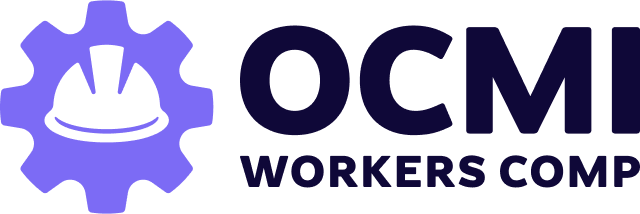Managing the financial impact of workers compensation is a challenge that hits every employer’s bottom line. Premium hikes, rising claims, and confusing compliance rules can derail profits fast. But what if there was a smarter, leaner way to stay protected—without breaking the bank?
If you’re wondering how to reduce workers comp costs, stay compliant, and still offer excellent coverage, you’re not alone. Thousands of businesses are seeking new alternatives to traditional insurance that actually work.
This guide will walk you through the best steps to control costs, choose the best workers compensation providers, and adopt the most effective compliance tools to protect your team and your budget.
Let’s dive into the strategies that can transform your workers compensation program—and your bottom line.
Compare Cost Saving Strategies for Workers Compensation
Many business leaders don’t realize how much they’re overspending on workers comp insurance. According to a recent industry report, over 60% of small businesses could reduce costs by at least 15% with smarter compliance and claims management practices. Compare cost saving strategies to learn what makes the difference.
- Misclassified employees: Job codes matter. Incorrect classification can inflate your premiums by thousands.
- Outdated safety programs: A lack of prevention exposes you to higher claims and penalties.
- Manual tracking: Relying on spreadsheets increases compliance errors and missed deadlines.
It’s not just about cutting costs. It’s about doing it right—safely and legally.
Top Compliance Solutions to Reduce Risk
Keeping up with ever-changing regulations is one of the biggest headaches for small- and mid-sized companies. That’s where the top compliance solutions come into play.
- Automated reporting tools: These platforms help avoid late filing penalties and reduce audit risk.
- Integrated claims management: Track, report, and resolve claims faster with fewer errors.
- Policy checkers: Make sure your coverage meets local and federal requirements at every step.
Pros:
- Fewer fines from missed deadlines
- Improved audit readiness with real-time data
- Faster claims resolution leading to lower premiums
Cons:
- Initial setup costs for software integration
- Learning curve for internal staff
Digital tools make compliance easier, cheaper, and more effective—especially for growing teams.
Workers Compensation vs General Liability: Know the Difference
Many business owners confuse workers compensation vs general liability insurance. Understanding the difference is key to managing your risks and avoiding gaps in coverage.
- Workers Compensation: Covers employee injuries or illnesses that happen on the job.
- General Liability: Protects your business from lawsuits due to property damage or customer injuries.
Choosing the right coverage isn’t just about price—it’s about protection. The best strategy is to ensure both policies complement each other, without duplicating costs.
Avoid paying more by auditing your coverage types and eliminating overlap.
Reviews of Workers Compensation Plans: What to Look For
Not all providers are created equal. Before signing anything, read reviews of workers compensation plans from real customers and independent analysts.
- Customer service quality: Fast claims processing saves time and money.
- Customizable options: Look for a plan that scales with your workforce.
- Industry experience: Providers that understand your niche often offer better rates and advice.
To find the best workers compensation providers, compare at least three options, request quotes, and ask for references. Explore our Comp Calculator and get your quote fast.
Most Effective Compliance Tools for Financial Control
Today’s top compliance platforms are built to reduce the financial impact of workers compensation through smarter reporting and real-time alerts.
Look for tools that offer:
- Claims benchmarking: Compare your incident rates against industry norms.
- Mobile reporting: Let employees report injuries instantly and accurately.
- Fraud detection: Use AI to flag suspicious claims before they cost you.
The right tools help you predict, prevent, and protect—before claims impact your budget.
Exploring Alternatives to Traditional Insurance
Looking beyond the standard insurance model? There are viable alternatives to traditional insurance that offer flexibility and long-term savings.
- Self-insurance groups (SIGs): Pool risk with like-minded businesses for collective bargaining power.
- Pay-as-you-go plans: Adjust premiums in real-time based on payroll data.
- Captive insurance: Create your own insurance company to retain underwriting profits.
These options aren’t for everyone, but for companies with stable claims history, they can offer 10-25% annual savings. Learn more about our Pay-As-You-Go program.
Conclusion
The financial impact of workers compensation doesn’t have to be a budget-busting burden. By using modern compliance solutions, evaluating your coverage strategies, and considering new insurance models, you can protect both your people and your profits.
From identifying the most effective compliance tools to exploring alternatives to traditional insurance, the key is taking action now—not after costs spiral out of control.
FAQs
What is the financial impact of workers compensation on small businesses?
It can be significant—often consuming 1-5% of payroll. Poor compliance or high claims can drive costs even higher.
How do I compare cost saving strategies effectively?
Start by analyzing your current claims history, classification codes, and premium structure. Then evaluate tools or plans that address your weak spots.
Can I use general liability insurance to cover work injuries?
No. Workers compensation is legally required in most states and covers employee-specific injuries, while general liability covers third-party claims.
What are the best workers compensation providers today?
Top-rated providers typically offer custom plans, fast claims support, and digital compliance tools. Reviews and industry experience also matter.
Are there real alternatives to traditional insurance?
Yes. Self-insurance groups, captive insurance models, and pay-as-you-go plans are gaining popularity for their cost-saving benefits.
- Audit your current policies to identify overspending areas.
- Research top compliance solutions that offer automation and analytics.
- Compare cost saving strategies including plan reviews and provider alternatives.
- Evaluate alternatives to traditional insurance like pay-as-you-go or captive models.
- Implement one change at a time and monitor savings with performance metrics.









